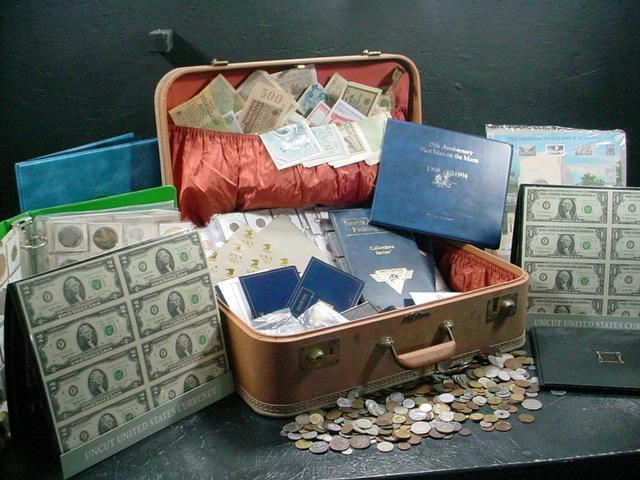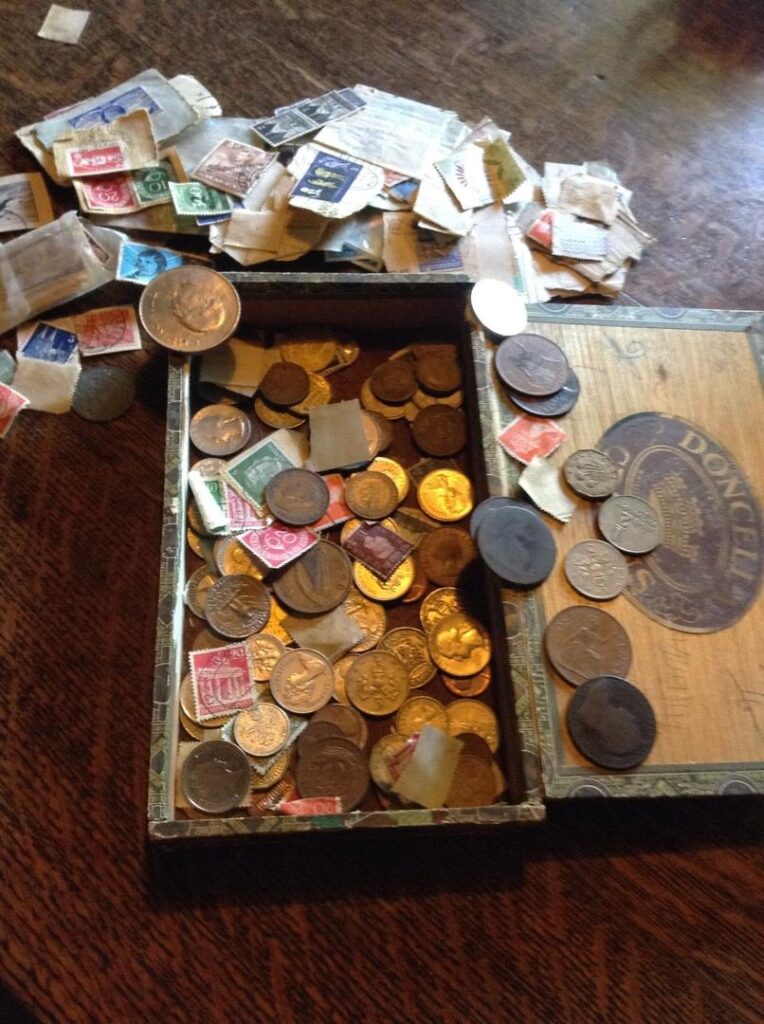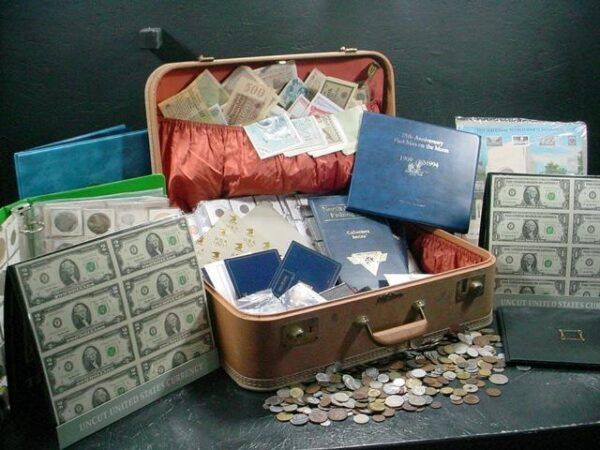#S.O.S #Surplus #Stuff #Amy #Moyer #Coins #WorthPoint

Along with stamps and sports trading cards, coins are one of the most common S.O.S. (Surplus Old Stuff) “collection” categories, thanks to the enthusiasm of “collecting coins” in the mid-to-late 20th century. If you have your dad’s, uncle’s, or grandpa’s coin collection squirreled away in your attic, read on to learn how to sort, save, and sell S.O.S. (Surplus Old Stuff): Coins.
The “Coin Guy”
The truth is that I am not a coin expert nor a “coin guy,” as it’s known in the trade. In fact, coins are one of the top categories I demur from dealing with (along with stamps and sports trading cards). Why? When a client presents me with a collection of coins (or stamps or sports trading cards), the said collection usually encompasses hundreds (if not thousands) of individual items stored in boxes, suitcases, binders, and such.
The sheer amount of time needed to paw through these collections is a bit beyond my bandwidth, given the fact that, from my experience, less than 1 percent of the collection is worth much of anything. Still, that 1 percent is something, so what I usually do with these clients is pass on the name of a “coin guy” to handle the collection. This way, at least, I’ve helped both my client and my coin guy with an ounce of “coin collecting karma” thrown in for good measure.

Silver and Gold
I will say that I always run a cursory eye over each coin collection to check for obvious clues to value. One of the most telltale signs of value is the coin collection’s storage quality. Do you see coins stored in clear hard plastic cases that have never been opened, indicating possible mint grade? Are coins positively gleaming in their silver or gold fineness, likely indicating actual silver or gold composition? Are a run of coins stored in vintage blue Whitman trifold folders labeled “Mercury Dimes,” “Jefferson Nickel,” or similar? Make sure you crack open those folders to see how complete the collections are.
In contrast, is the collection you’re perusing stored in shoe and cigar boxes, with individual coins leaving your fingers sticky with decades-old grime? You may be better off passing off those crates to a “coin guy” rather than wasting hours (days, weeks) sorting through those with latex gloves, a polishing cloth, and a loupe. If the coins weren’t worth preserving well in the first place, the likelihood of them having great value has also plummeted.
Foreign Versus Domestic Coins
There is also a difference between foreign and domestic coin collections. Old foreign “coin collections” that I come across are, by and large, built from actual foreign travel during the mid-to-late 20th century, when holding on to a couple of coins or a banknote or two during a foreign vacation made a nice and compact souvenir. Who didn’t save a 500 or 1000 lire coin from Italy because it was so pretty, with bimetallic tones? How about those bills with watermarks and transparent windows that were so fun to hold up to a lamp or window?
Today, much of this foreign money has little value other than to exchange it for actual US dollars. If you are interested in a quick way to do this, you can either bring your cache of foreign coins and bills to a reputable “We Buy Gold” place or send it to one of the many online outfits that will convert it to American dollars for you.
Hard Decisions
By now, you should have a general idea of what has value in your S.O.S. (Surplus Old Stuff): Coins. Now comes the hard decision: Do you want to carefully weed through the collection remnants with a coin identifier app on your phone? Well, if you are huddled away in a freezing clime with lots of time on your hands and Netflix to binge-watch, this might be the activity for you.
However, if time is not on your side, maybe you want to find a good “coin guy” or reputable “We Buy Gold” place to help. Alternatively, you could simply donate the collection to your favorite charity. While you will be taking your chances with the latter, you can always hope that you’ll be the recipient of some “coin-collecting karma” one day!
5 Steps for Cleaning Out S.O.S. (Surplus Old Stuff): Coins
- Gather information. If the coins are from a relative, ask what they know about the collection. Were they Indian Head pennies plucked from pocket change when they were eight years old, or were they mint silver dollars purchased each Christmas?
- Check for 20th-century foreign coins. Were these coins pocketed away as souvenirs during vacations abroad? Today, they may just have exchange value.
- View storage methods. If the coins were kept in folders or storage cases, chances are they have more value than those stored in old jelly jars.
- Save the silver and gold. Any coins made of these fine metals have at least melt value and likely more.
- Make a hard decision. Once you have sorted the gold from the jelly jar collections, you have a general idea of what has value. Now is the time to decide: Identify on your own with a coin identifier app, pass on to a second party or “coin guy,” or simply donate. The coin choice is yours!
Read more: When is a quarter worth more than twenty-five cents? Find the answer here.
Amy Moyer is the proprietor of Antmuffin: Art, Antiques & Collectibles. She holds a B.A. in Visual Art from Brown University and lives in Boston.
WorthPoint—Discover. Value. Preserve.




